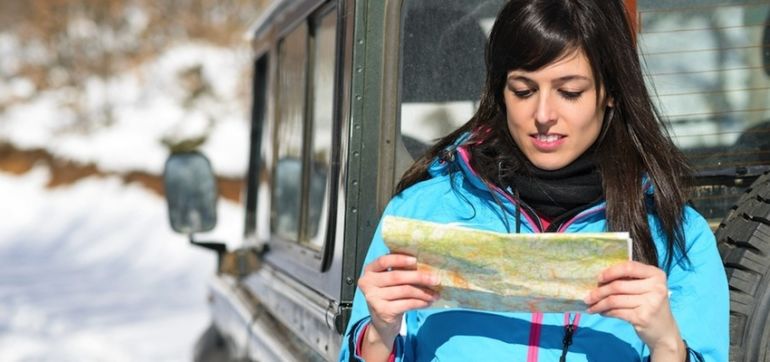Surveying And Vegetation
When on the ground, land surveyors may find that traditional surveying equipment is blocked by large trees or other obstructions. They may even be unable to traverse the land because of steep hills, inconvenient streams, or other natural or man-made features. Combined, these features may make surveying difficult or even impossible from on the land itself, particularly in undeveloped areas. However, there are ways around these obstructions which allow surveyors to create accurate and precise surveys.
Some methods of surveying can penetrate trees and ground cover. Among these is LiDAR, a laser-based method. Because the laser device is flown over the area in an airplane, it is ideal for heavily forested areas where access on foot may be difficult or impossible.
Other surveying applications, on the other hand, require measurement of the vegetation. Similar aerial methods do not penetrate tree tops, and therefore can give an idea of the vegetation while still allowing the surveyor to work from a distance.
One type of surveying, known as 'vegetation surveying,' is particularly interested in the vegetation found in a given area. Unlike standard land surveying, vegetation surveying often depicts rough boundaries, not strict lines. Vegetation surveying, or the mapping of plant habitats, is a valuable tool for botanists, environmentalists, and other earth science applications. Depending upon its intended use, a vegetation survey may indicate areas with vegetation and those without, or the species of plant and their density and location. These maps may be used to identify sensitive ecological areas (such as wetlands), map the spread of plants, or examine environmental changes following natural or man-made events.
In cases where vegetation surveying is desirable, measurements may be taken using aerial methods or using a surveyor's transit or total station to measure vegetation height and to lay out a grid of the terrain, onto which vegetation can be measured. The same grid can then be used by another surveying team after a period of time to measure changes in vegetation and terrain.
While topographical maps may display vegetation or man-made features, a digital terrain model (also known as a digital elevation model) generally only represents the ground topography and terrain underneath the vegetation. Digital terrain models may be referred to as bare-earth models, while Digital Surface Models include features such as vegetation.
There are a variety of surveying methods used to create topographic surveys or digital terrain models, such as direct surveying (with a surveyor's transit or total station) or remote sensing technologies such as aerial and satellite imagery, LiDAR methods, and photogrammery. The most appropriate method depends on the area being surveyed and the amount and type of data required. Some surveying methods used to create these models, such as radar, reflect the highest elevation point on a given location, whether this is the top of a tree or building or bare ground, while others are intended for the measurement of the terrain itself.
Related Articles
-
What is All the Fuzz About Thin and Beautiful
We witness today抯 popular beliefs putting much emphasis on our we
-
How Many Calories Should You Consume The First Few Months After Having Lap Band Surgery?
With the obesity rates skyrocketing across the country, many overweigh
-
Caralluma Burn Weight-loss
Those who wish to shed weight need to co
-
Type 2 diabetes risk linked to low thyroid function, new study suggests
A low thyroid function has been found to be a risk factor for
-
Smart Eating Means Steady Weight Loss For You!
With the overabundance of weight loss tips out there, you may fe
-
Little Changes Add To Weight Loss, Part 3
How long did it take you to gain weight?
- DON'T MISS
- Get Weight Loss Help Here And Now
- White Willow Bark – The Critical Weight Loss (Diet) Assistant
- How To Use Every Free Minute To Workout
- Yoga for Weight Loss and Balance
- What Is The Grapefruit Diet?
- Lose Pregnancy Weight
- 5 Steps To Becoming A Flexible Dieter
- 3 Easy Tactics To Burn Fat
- Advantages Of Weight Loss Program
- Deciding on Healthy and balanced Fast Food




